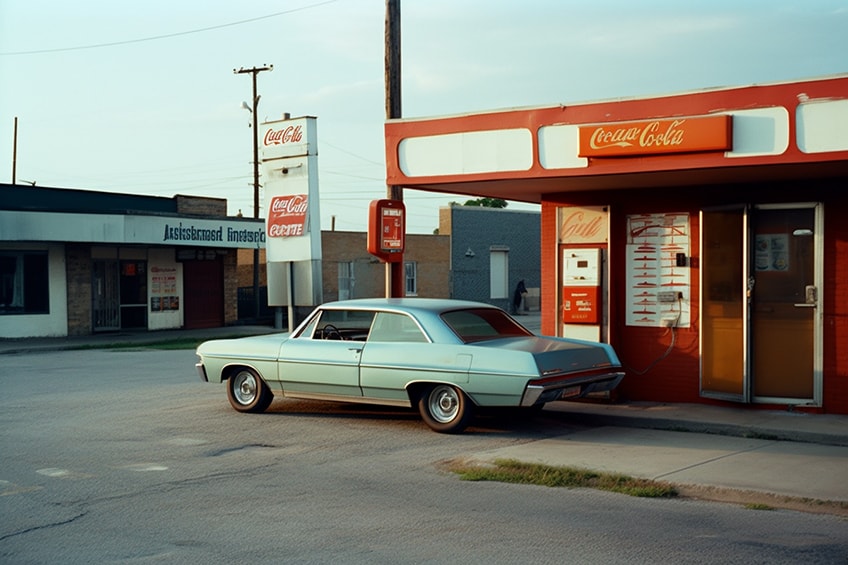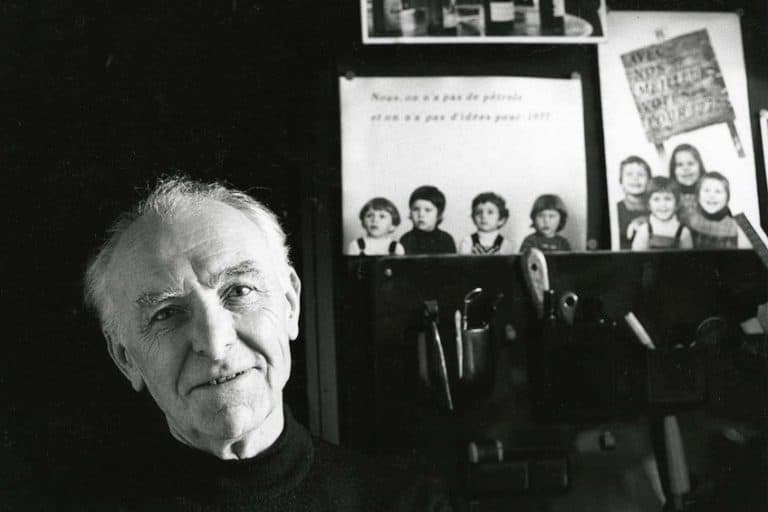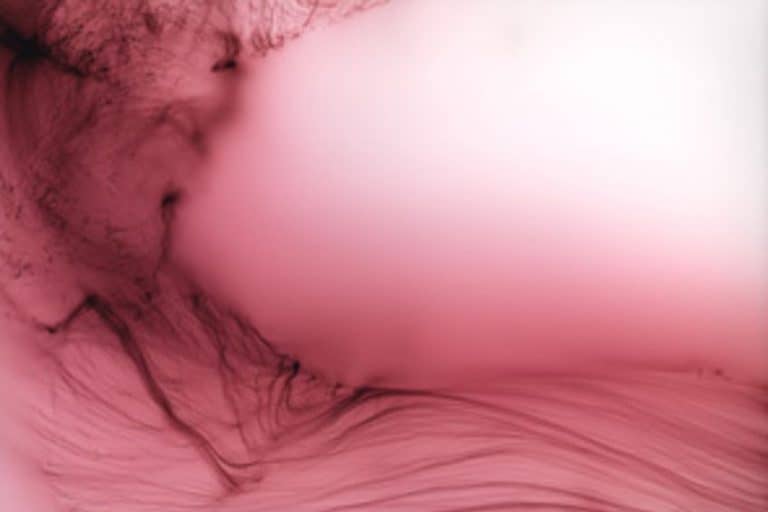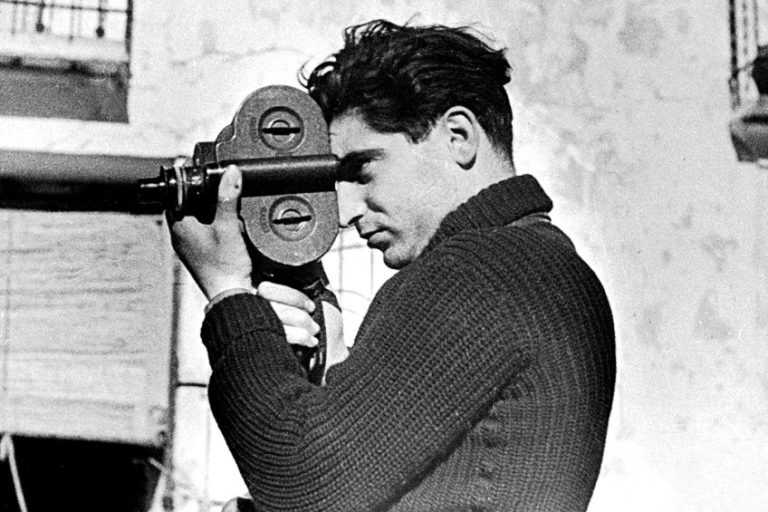William Eggleston – Discover a Legend of Modern Photography
As a pioneer of color photography, William Eggleston is a legend in the field of Modern photography, with his contributions showcasing the monumental impact of the ordinary. Through vibrant analog color, intriguing still-lifes, and scenes from American suburbia, William Eggleston’s photography is anything short of what the fine art world needed. In this article, we will explore the life and art of William Eggleston, including some of the influences behind the development of his visual language, and a few top-rated reads about the photographer. Keep reading for more about the fascinating history of William Eggleston and his long-standing career in photography!
Table of Contents
Grounding Color Photography: The Life of William Eggleston
| Artist Name | William Eggleston |
| Date of Birth | 27 July 1939 |
| Nationality | American |
| Associated Movements, Themes, and Styles | Modern art, color photography, American suburbia, urban photography, and Naturalism |
| Mediums | Photography, color transparency film, and dye transfer printing |
| Famous Artworks | ● Untitled (Gingham Woman, Albers wall) (1965 – 1974) ● Untitled (Stone lions in the truck bed) (1965 – 1974) ● Untitled (Memphis) (1971) ● The Outlands series (1981 – 1988) |
William Eggleston is one of the most famous photographers from the 20th century who is best remembered for establishing the genre of color photography as a legitimate art form. Eggleston’s experiments with color in analog photography and unique candid images of American suburbia, urban life, and Memphis culture have cemented the artist’s legacy in photography. Eggleston’s work can be found in the collections of art museums such as the National Portrait Gallery and the Metropolitan Museum of Art, which showcase Eggleston’s rich and nuanced photographic style.
William Eggleston’s observational eye offers viewers an experience of different Modern and Contemporary scenes through an exploration of color. Below, we will dive into the details of Eggleston’s career, life, and stylistic influences that trace the development and success of this globally renowned photographer.
Early Life and Education
Born in 1939 in Memphis Tennessee, William Eggleston was raised in Sumner, Mississippi, where he spent his childhood exploring the arts and music through drawing and piano practice. Eggleston had an introverted personality as a child and enjoyed cutting out images from magazines. Eggleston attended boarding school at the Webb School when he was 15, and described his experience as callous, and more of a “Spartan routine to build character” than attuned to the arts. Eggleston stood out in a school where young men were expected to pursue sports and traditional careers since the young Eggleston preferred to observe the world and pursue the arts.
Regardless of his differing worldview, Eggleston did not feel like an outsider but was aware of his early passion.
Eggleston did not formally complete any degree he enrolled in and briefly attended three universities for over five years. Nevertheless, his interest in photography soon emerged when his friend purchased him a Leica camera, which inspired his creativity. Eggleston’s introduction to photography was through Abstract Expressionism, encouraged by the painter Tom Young.
Between 1973 and 1974, Eggleston taught at Harvard, where he encountered the medium of dye-transfer printing. He read about the process while reviewing the price list of a lab in Chicago and recalled that the method was described as the ultimate print, which piqued his curiosity. He journeyed to Chicago to observe for himself what the process was and discovered most of the images were executed for commercial purposes with overwhelming saturation in color. Eggleston’s curiosity led to him pursuing the method when photographing ordinary subjects. His adoption of dye-transfer printing led to some of his best and most striking photographs, most notably, The Red Ceiling (1973), which became a powerful visual image resembling blood on a wall.
Significant Events and Publications
While working at Harvard, Eggleston began working towards his first portfolio titled 14 Pictures (1974), which was exhibited two years later at the Museum of Modern Art in New York. While the museum held previous shows by other artists who exhibited color photographs, Eggleston’s show picked up the tale that his work was the first color show at the museum. His 1976 exhibition was considered a notable moment in his career and the field of American Modern photography since his work was shown at an institution that validated his method and medium as true works of art in the eyes of the New York art scene.
Eggleston’s show at the Museum of Modern Art also led to his association with Andy Warhol and his inner circle, including Viva, who Eggleston started a relationship with. Eggleston’s engagements with other Modern photographers led to his images adopting a democratic approach as suggested by Mark Holborn.
Throughout the 1970s, Eggleston also experimented with video and produced a small documentary film called Stranded in Canton, which included over seven hours of footage. In 1976, the artist produced his first publication William Eggleston’s Guide and later The Democratic Forest, which was released in 1989.
Eggleston went on to produce and publish many portfolios and publications, including seminal works such as Los Alamos, which was completed in 1974 but published later, Election Eve in 1977, The Morals of Vision (1978), Seven (1979), The Louisiana Project (1980), and Graceland (1984), which was a commissioned series featuring photographs of Elvis Presley’s home as an airless and windowless tomb promoted through preferences for “bad taste”. Most of Eggleston’s early series were not exhibited until the 2000s and included series like The Nightclub Portraits (1973), which saw Eggleston explore portraiture through the bars and clubs of Memphis. His series Lost and Found, was also hidden from the public eye until 2008 and were in fact, shot by Walter Hopps.
In 2016, Eggleston joined David Zwirner Gallery and held his first solo William Eggleston: The Democratic Forest, which showcased works from Eggleston’s encyclopedic project. Eggleston also held numerous solo presentations across the world, including the Corcoran Gallery of Art in Washington D. C. and the Barbican Gallery in London in the 90s. In 2008, a career survey of Eggleston’s photography was organized by the Haus der Kunst in Munich and by the Whitney Museum of American Art, which traveled to many prominent neighboring museums.
Photographic Style and Influences
Spanning a career of over six decades, William Eggleston developed his visual language through his remarkable understanding of elements such as form, color, and composition, which can be seen in his poetic approach to his subjects. Eggleston uses the notion of the ordinary to establish his unique set of poetic vernacular that skews any fixed meaning and highlights the complex landscape of the mundane world.
Eggleston’s early photographic series was inspired by Swiss-born photographer Robert Frank and a book penned by Henri Cartier-Bresson titled The Decisive Moment. Eggleston’s career saw a shift after he absorbed the concept of Cartier-Bresson’s decisive moment, which sparked his eager experimentation with color transparency film. Color transparency film became his primary medium in the 1960s and developed his style in isolation from other photographers.
Eggleston’s photography encompasses seemingly ordinary items and objects such as discarded waste products, power wires, road signs, and palm trees, all of which remind one of the presence and impact of human occupation.
What makes Eggleston’s approach so compelling is his ability to draw attention to the grainy details of life that showcase the beauty of mundane scenes and the various nuanced undercurrents that exist in common spaces and objects. His subjects traverse through close friends, intimate settings, and his inner world, which are deceptive and present a sense of sleeping danger. Critics have also suggested that Eggleston was perhaps influenced by the work of photorealists and the interpretation of American suburbia and culture of the 1960s, which were foretold in Photorealist paintings.
Notable Awards and Recognition
In 1974, Eggleston received the prestigious Guggenheim Fellowship, which was followed by the Hasselblad Award in 1998. In 2003, he also received the Honorary Fellowship of the Royal Photographic Society and went on to collaborate with many filmmakers on the sets for films such as Annie (1982) and True Stories (1986). Eggleston’s images entered the commercial arena with the debut of Big Star’s album, which Eggleston recorded and photographed. His iconic photograph The Red Ceiling was used on the album cover for Radio City by Big Star. Eggleston’s images were also used for covers on the albums of Alex Chilton, Primal Scream, and Terry Manning. Jimmy Eat World also featured Eggleston’s image Memphis (1968) on the cover of Bleed American (2001).
William Eggleston’s photography was featured in numerous band album covers throughout the 2000s. In 1992, Eggleston established the Eggleston Artistic Trust, manned by his two sons and dedicated to the preservation and representation of Eggleston’s photographs. In 2017, Eggleston released his own music called Musik, which included a series of 13” electronic soundscapes, which were improvised and inspired by his role model, Bach, and Handel. The soundscape collection was produced on a 1980s Korg synthesizer and recorded on floppy disks.
In 2019, a non-profit organization called the Eggleston Art Foundation was established, which dedicated itself to the study and preservation of the artist’s work and was founded in Memphis, Tennessee.
The organization currently holds an archive of Eggleston’s images and is considered a valuable resource.
Iconic Shots by William Eggleston
Now that you have an informed perspective of the inner world and career development of William Eggleston, you can now appreciate a selection of his photos, which provide insight into some of his best series.
Untitled (1970 – 1973)
| Date | 1970 – 1973 |
| Medium | Dye transfer print on paper |
| Dimensions (cm) | 30.2 x 45.8 |
| Where It Is Housed | Tate Gallery, London, United Kingdom |
In the 1970s, Eggleston was named one of the most important photographers of the decade by a leading critic and Director of Photography at the Museum of Modern Art, John Szarkowski.
This image of a man dressed in a suit while smoking in the middle of a kitchen was part of a portfolio of works compiled from Eggleston’s series Chromes, which was shot between 1970 and 1973.
The images from the series showcase Eggleston’s bold sense of color elevated with his formal compositions, use of reflections, and strong diagonal lines. His images featured shots of cars, interior spaces, and portraits of individuals captured in vivid contrasts of blues, reds, and greens.
Greenwood, Mississippi (Red Ceiling) (c. 1971)
| Date | Taken c. 1971 and printed in 1980 |
| Medium | Dye transfer print |
| Dimensions (cm) | 29.8 x 45.7 |
| Where It Is Housed | Private collection |
This striking red image initially presented as a challenge to Eggleston who approached the image like a “Bach exercise”. Eggleston’s full-red image is infiltrated with saturated reds that resulted in one of his most sought-after images.
The dye transfer technique was developed by Kodak in the 1940s and was used almost exclusively in graphic art for advertising and commercial purposes.
The process behind the dye transfer technique involved three color separations: yellow, magenta, and cyan, which were printed individually and enabled a controlled approach to color. The process was incredibly time-consuming and expensive, but the results were well worth the effort. The photo of the red ceiling was shot at Eggleston’s friend’s home. His friend, T. C. Boring, had his rooms painted in solid colors, which resulted in a hallucinatory effect. The image of the red ceiling garnered significant attention for its vibrant psychological impact evoking an intense electric sensation that can also feel like claustrophobia.
Untitled, Green Car; Los Alamos Series (c. 1971 – 1974)
| Date | c. 1971 – 1974 |
| Medium | C-print |
| Dimensions (cm) | 35 x 43 |
| Where It Is Housed | Private collection |
This famous Green Car image was shot while Eggleston embarked on a nine-year-long road trip to document small towns across the Southwest and American South.
From diners to abandoned gas stations and vast stretches of land, one can marvel at the journey that took Eggleston nine years to reach his destination.
He completed the series in 2002 and published the work under the series titled Los Alamos, which comprised 75 dye-transfer color prints shot from his journeys between 1965 and 1974. These images were part of his first exploration of color film, which derived its name from the nuclear fission laboratory located in New Mexico, which saw the production of atomic bombs used for World War II in its walls.
Book Recommendations
William Eggleston’s photography is addictive to browse through and is a demonstration of the way that color balance can be leveraged to highlight the cinematic and curious aspects of life.
Below are a few top book recommendations from Amazon that provide a detailed scope of Eggleston’s career and artistic vision.
For Now (2010) by William Eggleston and Michael Almereyda
For Now presents a collection of unseen images from four decades of photography by William Eggleston. The collection is a selection of works by filmmaker Michael Almereyda, who hand-picked a selection of unusual images in the artist’s collection that conveys a sense of offhand intimacy and eccentricity. One can expect to find additions by Amy Taubin, Greil Marcus, Lloyd Fonvielle, and Kristine McKenna that provide a holistic opinion on the work of William Eggleston.
- A collection of unseen images from William Eggleston's career
- Explore the eccentricity and intimate nature of Eggleston's works
- Includes commentary by Amy Taubin, Greil Marcus, and others
William Eggleston Portraits (2016) by Phillip Prodger
This sought-after publication was published in collaboration with the National Portrait Gallery in London and showcases the best of William Eggleston’s career in portraiture. The book also provides insight into the artist’s first color images from his Los Alamos series as well as many unseen images from his career.
From photographs of Dennis Hopper to images of strangers and musicians, one can expect to thoroughly enjoy an interview with Eggleston as well as a chronology and essay on his artistic process, career, and images.
- Published in collaboration with the National Portrait Gallery
- Explores the highlights of Eggleston's portraiture
- Dives into the first color images from the Los Alamos series
William Eggleston: Morals of Vision (2019) by William Eggleston and Caldecott Chubb
This rare publication is a must-have for collectors of William Eggleston’s work. The book is part of a limited edition of images, originally released in 1978, and is considered a collectible rarity. This updated Steidl edition is a reimagination of the original Morals of Vision and is highly rated among previous buyers.
- A must-have for William Eggleston collectors and fans
- Part of a rare and limited series of images from 1978
- A modern reimagining of this work available to all collectors
William Eggleston has undoubtedly created some of the most arresting and eye-catching images of American suburbia and culture, which showcases his mastery over color balance and composition. Eggleston’s photography continues to flourish among photography professionals and inspires many to develop an appreciation for analog photographic techniques.
Frequently Asked Questions
Who Is William Eggleston?
Globally renowned American photographer William Eggleston is a leading photographer who captures the vivid poetry of mundane objects and suburban life. Eggleston is famous for his unique artistic vision in creating images using a dye-transfer technique, which produces saturated and well-balanced color photos. Eggleston is credited with establishing color photography in the fine art world.
What Is William Eggleston’s Most Famous Photograph?
Untitled (Greenwood, Mississippi) (1971) is recognized as William Eggleston’s most famous photograph, which is also known as The Red Ceiling.
What Techniques Did William Eggleston Use in His Color Photographs?
William Eggleston adopted the dye-transfer technique for his color photographs, which resulted in rich and saturated colors. He also used Canon and Leica cameras, as well as black-and-white and Kodachrome slide film.
Jordan Anthony is a film photographer, curator, and arts writer based in Cape Town, South Africa. Anthony schooled in Durban and graduated from the University of the Witwatersrand, Johannesburg, with a Bachelor of Art in Fine Arts. During her studies, she explored additional electives in archaeology and psychology, while focusing on themes such as healing, identity, dreams, and intuitive creation in her Contemporary art practice. She has since worked and collaborated with various professionals in the local art industry, including the KZNSA Gallery in Durban (with Strauss & Co.), Turbine Art Fair (via overheard in the gallery), and the Wits Art Museum.
Anthony’s interests include subjects and themes related to philosophy, memory, and esotericism. Her personal photography archive traces her exploration of film through abstract manipulations of color, portraiture, candid photography, and urban landscapes. Her favorite art movements include Surrealism and Fluxus, as well as art produced by ancient civilizations. Anthony’s earliest encounters with art began in childhood with a book on Salvador Dalí and imagery from old recipe books, medical books, and religious literature. She also enjoys the allure of found objects, brown noise, and constellations.
Learn more about Jordan Anthony and the Art in Context Team.
Cite this Article
Jordan, Anthony, “William Eggleston – Discover a Legend of Modern Photography.” Art in Context. October 29, 2023. URL: https://artincontext.org/william-eggleston/
Anthony, J. (2023, 29 October). William Eggleston – Discover a Legend of Modern Photography. Art in Context. https://artincontext.org/william-eggleston/
Anthony, Jordan. “William Eggleston – Discover a Legend of Modern Photography.” Art in Context, October 29, 2023. https://artincontext.org/william-eggleston/.












